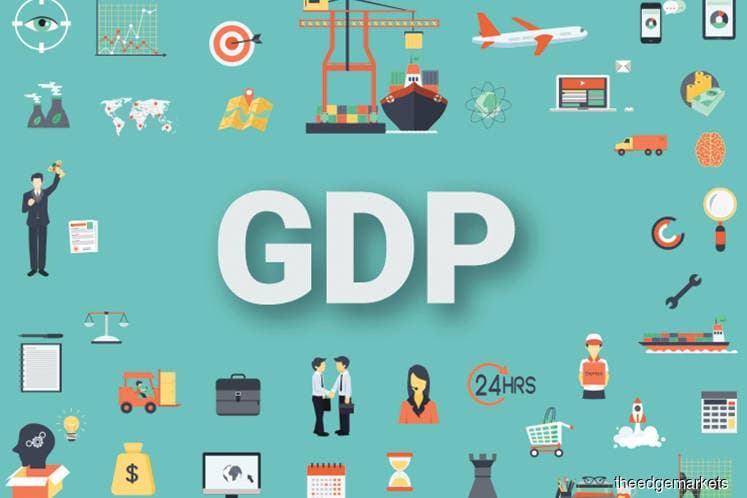
This article first appeared in The Edge Financial Daily on August 17, 2018
KUALA LUMPUR: Just days ahead of Bank Negara Malaysia’s release of the second quarter of 2018’s (2Q18) gross domestic product (GDP) growth figure today, economists have cut their forecasts amid weak economic data from June.
Indices for industrial production and services were weaker than expected while disappointing crude palm oil (CPO) production data also dampened sentiment, amid a slowdown in private investment, economists told The Edge Financial Daily.
According to 21 economists tracked by Bloomberg, the average estimate for 2Q18 GDP growth is 5.21% year-on-year (y-o-y). However, a number of local research houses recently cut their forecasts to below 5%, including Maybank Investment Bank (IB) Research, CIMB Research, MIDF Research and Hong Leong Investment Bank Research.
“The main reason for our downgrade was the slowdown in the services index, which was led by a sharp slowdown in financial services, and the disappointing [results of] the Industrial Production Index (IPI), which saw a sharp contraction in natural gas output,” CIMB economist Michelle Chia said.
Speaking to the daily, she noted that volatility in global financial markets and lower liquidity ahead of the 14th general election (GE14) had resulted in the lower demand for financial services.
On top of that, weaker agricultural data had led to the lowering of CIMB’s forecast GDP growth for the quarter to 4.9% from 5.2% previously.
Lee Heng Guie, executive director of the Socio-Economic Research Centre (SERC), also cited agricultural data in the form of lower CPO and poor IPI data, as reasons to lower his 2Q18 GDP forecast to 4.9%.
“The underlying growth momentum will moderate further in the second half of 2018 due to the US-China trade war, negative sentiment over emerging market currencies due to the pressure on the lira and volatility in the stock market,” he told The Edge Financial Daily.
In early July, SERC had revised downward its 2Q18 GDP growth projection to 5.4% from an initial 5.7%, citing external headwinds such as an escalating US-China trade war and domestic developments.
Meanwhile, Maybank IB Research economist Suhaimi Illias posed a slightly more pessimistic outlook of 4.8% GDP growth for the previous quarter, mainly on the back of slower growth in the Manufacturing Production Index, on top of the abovementioned factors.
In a report on Tuesday, he pinpointed slower growth in export-oriented industries as well as domestic-oriented industries, noting that the unexpected holidays following the GE14 in May and Hari Raya Aidilfitri holidays in June had also affected output growth.
While growing trade tensions between the US and China are viewed as significant downside risks, there has not been any direct evidence of negative impacts on Malaysian exports so far, CIMB’s Chia said.
“It’s hard to gauge exactly which sectors will be affected, but the tariffs (of US$34 billion [139.4 billion] each from both sides) that were effective July will definitely affect some sectors,” Chia said. She added that the additional tariffs to be implemented in August, which will affect a total of US$32 billion worth of US and Chinese goods, will provide a further downward kick to Malaysia’s economy.
Meanwhile, strong consumer sentiment from the zero-rating of the goods and services tax is not expected to significantly lift Malaysia’s full-year GDP, as Chia believes consumers are simply bringing forward year-end spending.
Meanwhile, SERC’s Lee voiced concern over the rapidly deteriorating growth in private investment, noting that investors are still waiting for clues from the new government to its policies, which will likely be made clear following Prime Minister Tun Dr Mahathir Mohamad’s trip to China beginning today and the federal budget to be announced in November.
“I think we would have to prepare for very subdued private investments in the third and fourth quarters,” he said.
In 1Q18, the economy expanded by 5.4% y-o-y.